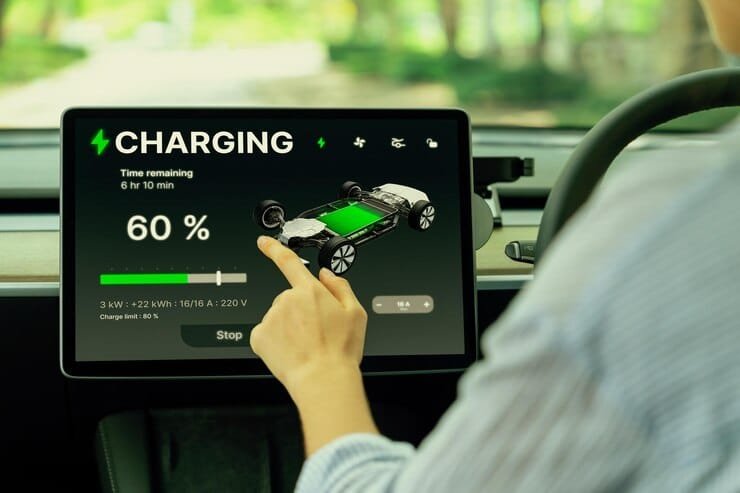Buckle up, buttercups! The auto industry’s about to get a hydrogen boost – and by boost, we mean a potential HUGE upheaval. Forget your grandpappy’s gas guzzler, because hydrogen fuel cells are threatening to rewrite the rulebook, one electron at a time!
Picture this: sleek, silent vehicles gliding down the highway, powered by nothing but water and a whole lotta science. Sounds idyllic, right? Well, the reality’s a bit more… explosive. The hydrogen fuel cell vehicle (FCEV) race is ON, and it’s less a Formula 1 grand prix and more a demolition derby of innovation – with everyone hoping their car doesn’t spontaneously combust (don’t worry, we’ll cover safety later!).
But here’s the million-dollar question (or should we say, million-hydrogen-dollar question!): Will these eco-friendly whizzbangs actually dethrone the gasoline-powered behemoths currently ruling the automotive roost? Are we on the verge of a full-blown automotive apocalypse? Or is this whole hydrogen hype just a lot of hot air?
This isn’t just some whimsical daydream for eco-warriors. We’re talking serious business – billions of dollars, thousands of jobs, and a potential shift in global power dynamics. This isn’t your average engine overhaul; it’s a paradigm shift so colossal, it could make the invention of the wheel look like child’s play.
So, grab your metaphorical hard hats and safety goggles (and maybe a fire extinguisher, just in case!), because we’re about to dive headfirst into the exhilarating, slightly terrifying world of hydrogen fuel cells. Prepare for a wild ride, folks – it’s gonna be electrifying! (Pun intended. Obviously.)
Buckle up, buttercups! The hydrogen fuel cell vehicle (HFCV) market is a rollercoaster of epic proportions, a wild ride of bubbling potential and sputtering setbacks. Let’s dive into the chaotic carnival that is this industry, shall we?

Positive Trends: The “H”appy Highlights
- Green is the New Green: The world’s going green, and HFCVs are shouting “Pick me! Pick me!” from the rooftops (which, ironically, are often powered by… you guessed it, fossil fuels!). The push for zero-emission vehicles is a HUGE tailwind, pushing governments and consumers towards cleaner alternatives. Toyota’s Mirai, for instance, cleverly capitalizes on this, proving HFCVs aren’t just a pipe dream, they’re a (relatively) sleek reality.
- Infrastructure’s Infrastructure (Yes, it’s a thing!): Hydrogen fueling stations are sprouting up like, well, hydrogen bubbles! While still patchy, increased investment is laying the groundwork for a wider network. Companies like Air Liquide are strategically building these stations, positioning themselves to become the Shell or BP of the hydrogen highway. Clever, eh?
- The “H”efty Price Tag is Dropping: HFCVs used to cost more than a small island nation. But thanks to economies of scale (and a touch of competitive pressure), prices are falling, making them more accessible to the masses. Think of it as hydrogen’s very own “deflationary revolution!”
Adverse Trends: The “H”urdles to Overcome
- The “H”ydrogen Hang-up (Storage and Transportation): Hydrogen is a fussy beast. Storing and transporting it efficiently and safely is a serious challenge. It’s like trying to herd cats—but the cats are highly flammable. Companies are wrestling with this, but solutions are still in their infancy.
- “H”igh Production Costs (For Now): Producing hydrogen remains expensive, especially green hydrogen (made without fossil fuels). Unless we crack the code for cheaper production, HFCVs will struggle to compete on price with their battery-powered cousins.
- The Chicken-and-Egg Conundrum: Consumers hesitate to buy HFCVs without a robust fueling infrastructure, but companies are hesitant to invest in that infrastructure without consumer demand. It’s a vicious cycle—a hydrogen-fueled Mobius strip of indecision!
Actionable Insights: Strategies for Success
- Collaborate, Don’t Complicate: Partnerships are key. Automakers need to work closely with hydrogen producers and infrastructure developers to create a cohesive ecosystem. Think of it as a hydrogen-powered Avengers team!
- Innovate, Don’t Imitate: Focus on improving hydrogen storage, transportation, and production technologies. The company that cracks the “cheap green hydrogen” code will be the industry titan.
- Educate, Don’t Agitate: Clear, compelling communication is crucial. Consumers need to understand the benefits of HFCVs and the progress being made to overcome challenges.
The HFCV market is a wild, woolly west. But for those brave enough to ride the rollercoaster, the rewards could be immense. So saddle up, partners, and let’s make some hydrogen history!
Automotives: Toyota’s Mirai, a hydrogen fuel cell vehicle, isn’t just a car; it’s a rolling testament to “fuel-ing” the future! They’re quietly (and cleanly) proving hydrogen’s viability, one zero-emission drive at a time. Think of it as a car whisper, not a car shout. Less noise, more gains. This ain’t your grandpappy’s gas guzzler.
Logistics & Transportation: DHL uses hydrogen fuel cell trucks for short-haul deliveries. It’s a fuel-cell-erated delivery system, saving on fuel costs and emissions. They’re not just delivering packages, they’re delivering on sustainability pledges. Pretty slick, huh?
Manufacturing: Factories are starting to use hydrogen fuel cell forklifts. These aren’t your average clunky warehouse beasts. They’re agile, efficient, and whisper-quiet, making warehouses safer and more productive. Plus, they’re less likely to scare the warehouse cat.
Healthcare: Ambulances powered by hydrogen fuel cells are popping up. Think about it: Quieter emergency responses, reduced emissions near hospitals (where clean air is crucial), and impressive range. It’s like a superhero ambulance, saving lives and the planet simultaneously! Boom!
Technology: Data centers are energy hogs. But fuel cells could provide backup power, ensuring zero downtime, and cutting carbon footprints. Imagine, a data center so green, it’s practically sprouting leaves. No more server meltdowns and a cleaner environment. Double win!
Actionable Insight for Strategists: The hydrogen fuel cell market is exploding (in a good way!). Don’t just sit on the sidelines and watch the hydrogen hype train leave the station. Find your niche, whether it’s in manufacturing fuel cell components, optimizing refueling infrastructure, or developing new applications. The future’s hydrogen, and it’s looking bright. (Pun intended.) Seriously though, get on board, or get left behind! This is no joke!
Strategic Partnerships & Joint Ventures: Toyota and Hyundai, for instance, aren’t competing head-to-head on every aspect of fuel cell technology. Instead, they’ve focused on collaborations, sharing expertise on specific components or geographic markets to reduce individual R&D costs and accelerate deployment. This allows them to focus on their core competencies.
Vertical Integration: Several companies are moving beyond simply producing fuel cells. They’re acquiring or developing expertise in hydrogen production, storage, and distribution. This reduces reliance on external suppliers, ensuring a stable supply chain and potentially higher profit margins. One example is a company investing in its own green hydrogen generation facility.
Government Incentives & Subsidies: Active lobbying and strategic engagement with governments worldwide are crucial. Companies are leveraging policy support for hydrogen infrastructure development and consumer incentives to drive demand. This includes securing grants and tax breaks for hydrogen refueling station construction and vehicle purchases.
Focus on Niche Applications: Instead of aiming for immediate mass market adoption, some firms are targeting specific sectors where fuel cells offer a clear advantage. This could involve heavy-duty trucking or maritime applications, where battery electric solutions struggle due to weight and range limitations. This allows for faster return on investment and early market leadership.
Technology Licensing & Open Innovation: Licensing their fuel cell technology to other vehicle manufacturers enables rapid scaling without the enormous capital expenditure of building multiple production lines. Similarly, open innovation initiatives – collaborating with research institutions and startups – are fostering faster technological advancements. This includes sharing intellectual property for mutual benefit.
Supply Chain Diversification: Geopolitical instability and supply chain disruptions highlighted the vulnerability of relying on single sources for critical materials. Companies are diversifying sourcing strategies for rare earth elements and other components, ensuring stable production even during unexpected events. This ensures business continuity in an increasingly unpredictable global landscape.
Marketing and Public Awareness: Beyond technical advancements, a strong focus on educating the public about the benefits of hydrogen fuel cell vehicles is crucial. This involves highlighting environmental benefits, performance advantages, and addressing misconceptions around hydrogen safety and infrastructure. This strategy includes targeted advertising campaigns and partnerships with environmental groups.

Outlook & Summary: H2-Whoa! What’s Next for Fuel Cells?
So, you’ve just survived the “Hydrogen Havoc” – congrats! You’re probably feeling a little… hydrogenated (we’ll allow it). Let’s recap this rollercoaster ride through the fuel cell frontier. Five to ten years? Buckle up, buttercup!
The next decade’s going to be less “slow burn” and more “boom!” Think less Internal Combustion Engine (ICE-cold, am I right?) and more H2-Oh-My-Goodness advancements. We’re talking infrastructure explosions (hopefully not literally!), clever cost-cutting innovations that’ll make your accountant do the happy dance, and maybe, just maybe, enough refueling stations to not leave you stranded in the desert like a forgotten Tamagotchi.
Will hydrogen cars rule the roost? Well, the “chicken or the egg” scenario is still hatching. We need more stations and more cars to get the ball rolling. But the industry giants are sniffing around like bloodhounds on a scent trail – investments are pouring in faster than your morning coffee. The potential for a clean sweep of the auto industry is real, but it’s more of a marathon than a sprint.
The big takeaway? It’s not about if hydrogen will disrupt the industry, but how spectacularly it will do it. Prepare for a wild ride filled with unexpected twists, turns, and possibly a few near misses (we’re looking at you, early adopter hiccups). And remember, even if your current car runs on fossil fuels, prepare for its hydrogen-powered cousin to be parked next to it soon!
So, tell us… Are you ready to ditch the dinosaur juice and embrace the hydrogen future, or are you still clinging to the past like a stubborn old tire?





